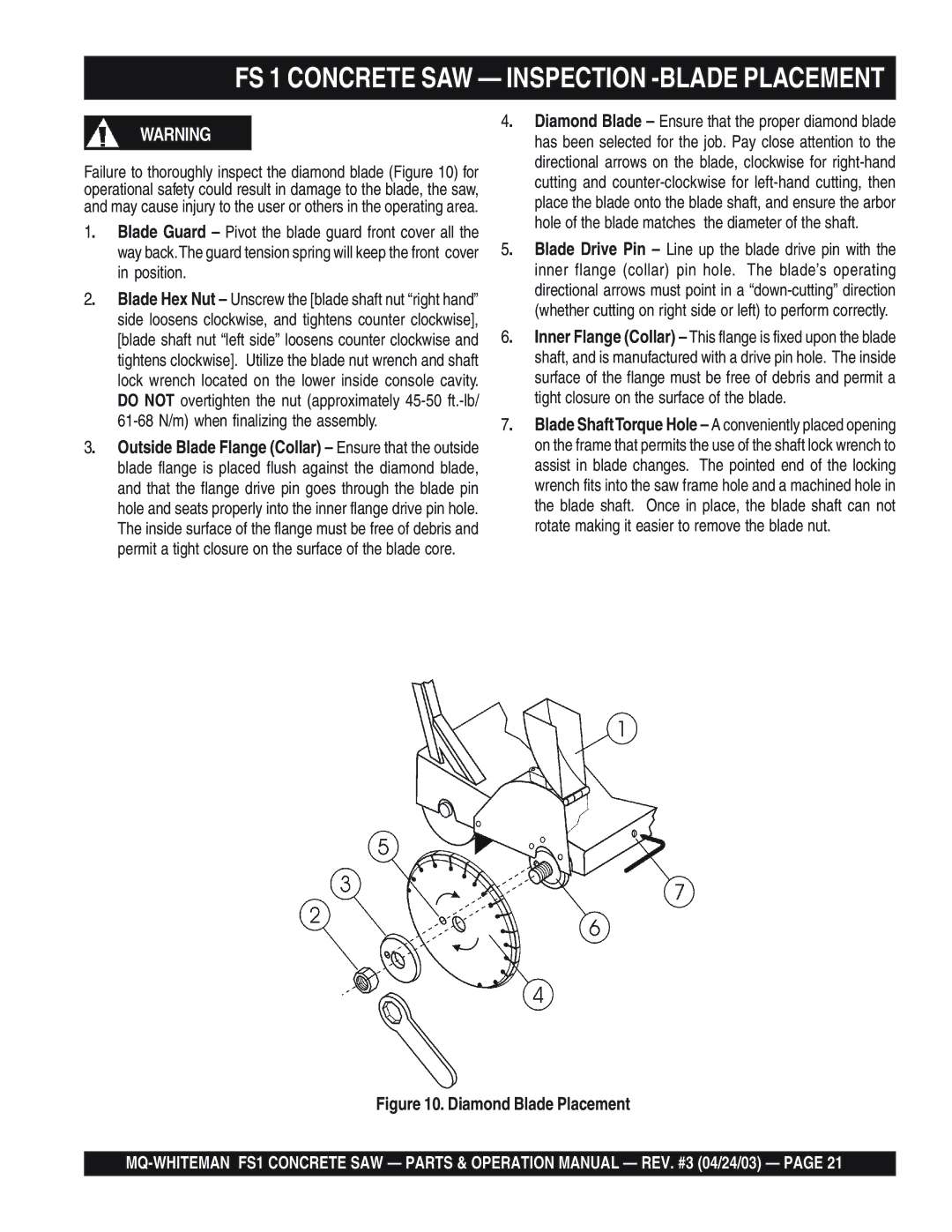FS 1 specifications
The Multiquip FS 1 is a versatile piece of equipment designed for efficient fuel management and transfer. Catering primarily to construction sites, agriculture, and industrial applications, the FS 1 is known for its compact design, robust performance, and reliable functionality.One of the main features of the Multiquip FS 1 is its high-capacity fuel tank, which is engineered to hold a substantial volume of diesel or gasoline, allowing users to refuel equipment without frequent interruptions. This fuel tank is equipped with a durable, weather-resistant cover that ensures protection against various environmental factors, extending the life of the equipment.
In terms of technology, the FS 1 incorporates advanced pumping systems that facilitate rapid fuel transfer. The pump is designed for low noise operation, reducing disturbances on job sites while ensuring efficient fuel flow. Furthermore, the inclusion of an automatic shutoff feature ensures safety during fueling operations by preventing overflows and spills, thus minimizing environmental risks.
The FS 1 is characterized by its mobility. Equipped with sturdy wheels and a reliable tow hitch, it can be easily transported from one location to another, simplifying the logistics of fuel distribution on-site. This portability is particularly beneficial in large construction projects where multiple machines require fueling at varied intervals.
Ergonomically designed, the FS 1 features user-friendly controls that simplify operation. Operators can easily manage fuel transfers, check gauge readings, and monitor flow rates without extensive training. Additionally, the FS 1 is designed to be compatible with various fuel nozzles, making it a versatile choice for different fueling needs.
The construction of the FS 1 emphasizes durability and longevity. Built with high-quality materials, it is resistant to corrosion and wear, making it suitable for demanding environments. The design also prioritizes ease of maintenance, with accessible components that allow for quick inspections and repairs.
In summary, the Multiquip FS 1 stands out for its combination of efficiency, safety, and mobility. It is an essential tool for professionals who require a reliable fuel management solution that is easy to operate and maintain. With its innovative design and advanced features, the FS 1 simplifies the fueling process, allowing users to focus on their core tasks and enhancing overall productivity on the job site.

